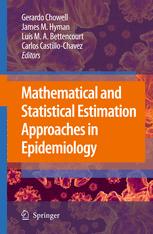

Most ebook files are in PDF format, so you can easily read them using various software such as Foxit Reader or directly on the Google Chrome browser.
Some ebook files are released by publishers in other formats such as .awz, .mobi, .epub, .fb2, etc. You may need to install specific software to read these formats on mobile/PC, such as Calibre.
Please read the tutorial at this link: https://ebookbell.com/faq
We offer FREE conversion to the popular formats you request; however, this may take some time. Therefore, right after payment, please email us, and we will try to provide the service as quickly as possible.
For some exceptional file formats or broken links (if any), please refrain from opening any disputes. Instead, email us first, and we will try to assist within a maximum of 6 hours.
EbookBell Team

5.0
48 reviewsMathematical and Statistical Estimation Approaches in Epidemiology compiles t- oretical and practical contributions of experts in the analysis of infectious disease epidemics in a single volume. Recent collections have focused in the analyses and simulation of deterministic and stochastic models whose aim is to identify and rank epidemiological and social mechanisms responsible for disease transmission. The contributions in this volume focus on the connections between models and disease data with emphasis on the application of mathematical and statistical approaches that quantify model and data uncertainty. The book is aimed at public health experts, applied mathematicians and sci- tists in the life and social sciences, particularly graduate or advanced undergraduate students, who are interested not only in building and connecting models to data but also in applying and developing methods that quantify uncertainty in the context of infectious diseases. Chowell and Brauer open this volume with an overview of the classical disease transmission models of Kermack-McKendrick including extensions that account for increased levels of epidemiological heterogeneity. Their theoretical tour is followed by the introduction of a simple methodology for the estimation of, the basic reproduction number,R . The use of this methodology 0 is illustrated, using regional data for 1918–1919 and 1968 in uenza pandemics.